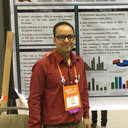Use of mass spectrometry to study signaling pathways.
Cuvinte cheie
Abstract
Activation of cells by extracellular stimuli, such as growth factors, initiates a cascade of events involving posttranslational modifications, including phosphorylation, formation of protein complexes, and induction or repression of gene expression. Traditionally, genetic methods or specific biochemical assays have been used to identify molecules involved in signaling pathways. Lately, mass spectrometry, combined with elegant biochemical approaches, has become a powerful tool for identifying proteins and posttranslational modifications. With this protocol, we hope to bridge the gap between the biochemical and molecular aspects of signal transduction pathways and the mass spectrometric tools and techniques that are available to study them. We provide methods for large-scale cell culture and immunoprecipitation of tyrosine-phosphorylated proteins, silver staining of gels, trypsin digests, and protein identification by matrix-assisted laser desorption/ionization (MALDI) mass spectrometry and nanoelectrospray tandem mass spectrometry. We discuss the special requirements for the identification of phosphorylation sites in proteins by mass spectrometry. We describe enrichment of phosphopeptides from unseparated peptide mixtures by immobilized metal affinity column (IMAC) and the use of phosphatases to identify phosphorylated peptides. We also discuss specialized methods, such as precursor ion scanning in the negative mode and direct sequencing of phosphopeptides in the positive mode. Our goal is to provide detailed methods in use today for proteomic applications in general and for receptor-mediated signaling pathways in particular.


